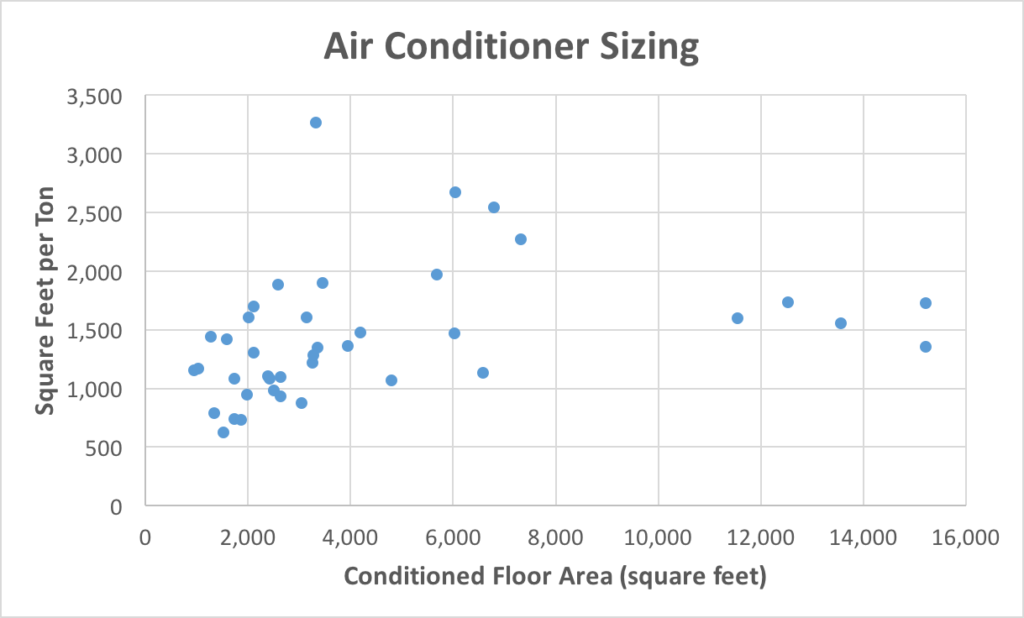Thanks for replies
I have 2 zones; 4 ton(main) and a 2.5 ton(lower level) for hvac.
------------------------------------------------------------------------------------
My heat pumps are sized directly for the square foot of the house.
Way off topic but...
Heating and cooling loads are NOT a function of the square footage of the house- it's about exterior surface areas & types. Sizing it by some BTU/square foot usually oversizes by a WAY suboptimal amount, with lower than nameplate efficiency and lower comfort to boot. At 6.5 tons it sounds about 2x oversized for most "normal" sized houses, houses that have niceties such as glass in the windows, doors that actually shut etc. Most insulated reasonably tight houses in NJ would be heated & cooled at about a ton per 1000-1500' of conditioned space, with a few outliers on both sides of that range. For 6.5 tons of heat to be right-sized you'd be looking at at 6500'-9500' house. (Unfortunately that level of oversizing pretty common.)
With heat pumps it's usually more efficient to UNDERSIZE it by a small amount and cover the shortfall at the seasonal extreme temperatures with a bit of auxiliary heat strip, to keep the heat pump operating at an efficient duty cycle. A 2x oversized system will heat/cool the place faster during a recovery ramp, but it will have lousier latent load control during the cooling season and bigger indoor temperature swings during the heating season. A right-sized system will seem like it's "struggling to keep up", running constantly for hours when its hot or cold outside, but not actually lose ground.
If you're curious about your oversize factors, try data logging the duty cycle on the system(s) on days/nights when the outdoor temps are near the
1%/99% outside design temperatures. With that information you'd be able to intelligently right-size the replacement equipment when the time comes.
Meanwhile, back on-topic...
A 75-80 gallon heat pump water heater could be a good solution for the tub fill if you have space for it. A heat pump water heater has a slower recovery rate than a standard electric , but it will lower the latent cooling loads on the house in summer, and use only about 1/3 the amount of electricity of a standard water heater, and add a small amount to the heating load for the heat pump to work with, improving it's duty cycle & as-used efficiency.

